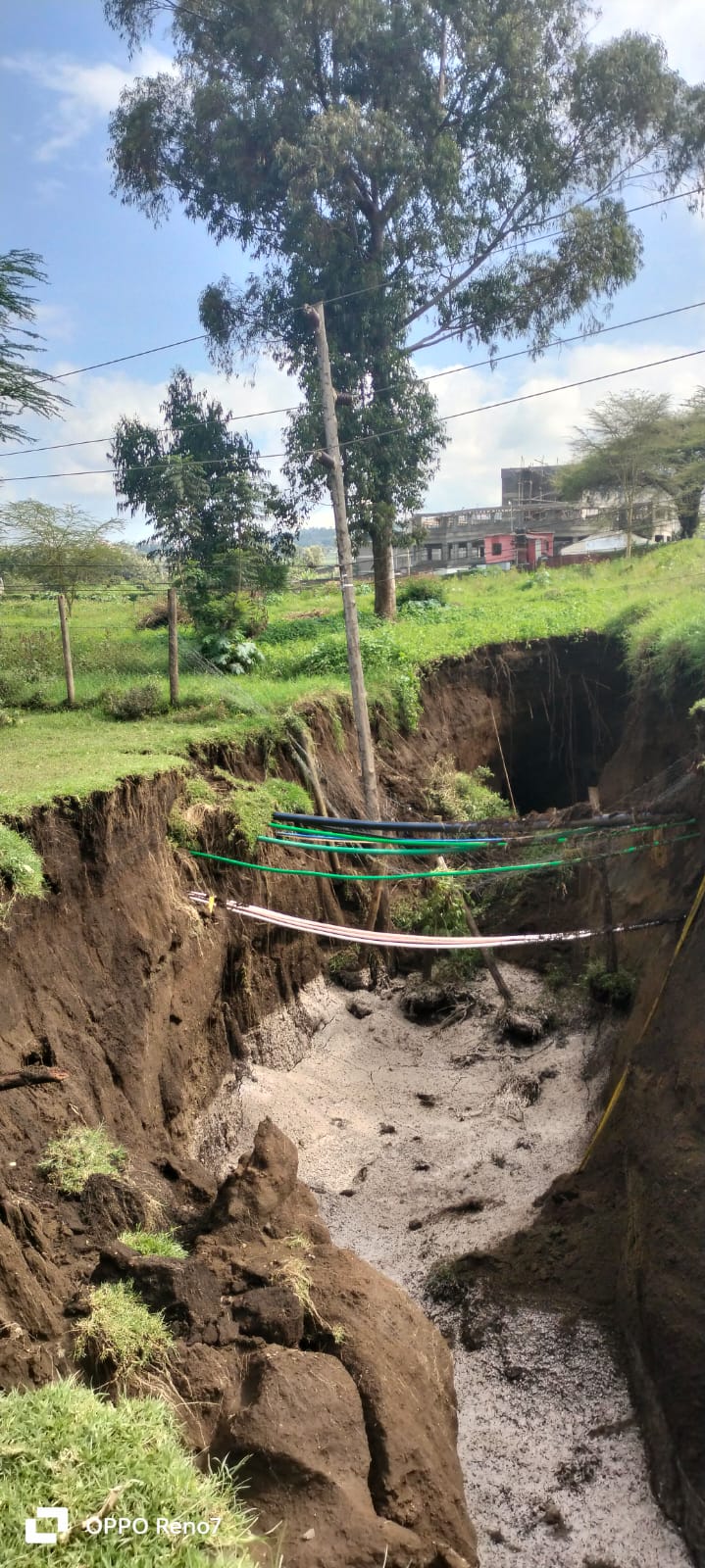The formation of a deep crack in Nakuru West Sub County of Nakuru County following heavy rains has sent shivers and worries among the public.
The University of Nairobi (UoN) Lecturer in the Department of Geology Dr. Edwin Dindi says the cracks were formed millions of years ago during the formation of the eastern arm of the Rift Valley.
Dr. Dindi was responding to queries following a report by the Police at Kaptembwo Police Station in Nakuru West Sub County following the formation of a deep crack at Eveready area approximately 10 meters from the Nakuru to Eldoret highway.
In a report the police said that a deep crack formed following a heavy downpour on Tuesday evening further noting that an electricity pole sank into the crack, “thereby posing a great danger to the residents.”
According to Dr. Dindi of the Geology Department of University of Nairobi, the area to the southwest of Nakuru town has several linear north to south trending zones with deep cracks that formed during the formation of the Rift Valley millions of years ago.
He says that over time, the cracks have been covered by materials including pyroclastics formed by fragmentation of rocks. In a study he conducted ten years ago, “An assessment of the performance of the geophysical methods as a tool for the detection of zones of potential subsidence in the area southwest of Nakuru town, Kenya,” Dr. Dindi says that the rift valley has very deep faults, “you see that from Naivasha you go down to go to the floor (of the rift valley), so that floor and the high side is separated by a deep fault,” said Dr. Dindi in an interview and adds, “the same applies to Sachng’wan where when driving you come down a steep slope.”

He says that around Eveready area of Nakuru there are deep faults that can go to about six kilometers that are covered by pyroclastics, “below that material there is firm
Rock that is also fractured, the thick layer of ash and dust, “that is continuous on the surface and so you cannot notice the fracture on the rock beneath,” he says and adds that, “during the dry season, there is no problem as the surface does not show the cracks.”
Dr. Dindi says that when there is a lot of rain and a lot of water flowing through the lose material, it begins to erode the material that has been covering the cracks, which then form hollow spaces in the subsurface.
When the vacuums become large, “the surface cannot be supported, so they collapse into the open space leaving a gaping hole,” he explains and terms this subterranean erosion.
Dr. Dindi is urging the public intending to carry out any form of construction in the area to first seek professional advice from geologists on the safe areas to build.
“if someone is going to build there and doesn’t know where the cracks are, he can call us we go with the geophysical methods to tell them where there will be a crack in future,” he says and add, “essentially the faults are there and only waiting for heavy rain to do what just happened.”
Nakuru West Sub-County Security team, the Kenya Power and Lighting Company (KPLC), the Kenya National Highways Authority (KENHA) and the Engineer at the County Government of Nakuru have visited the scene and the area has been cordoned to avert any possible danger.
“The area is currently under security surveillance. No injuries or loss of life has been reported,” says the police report





